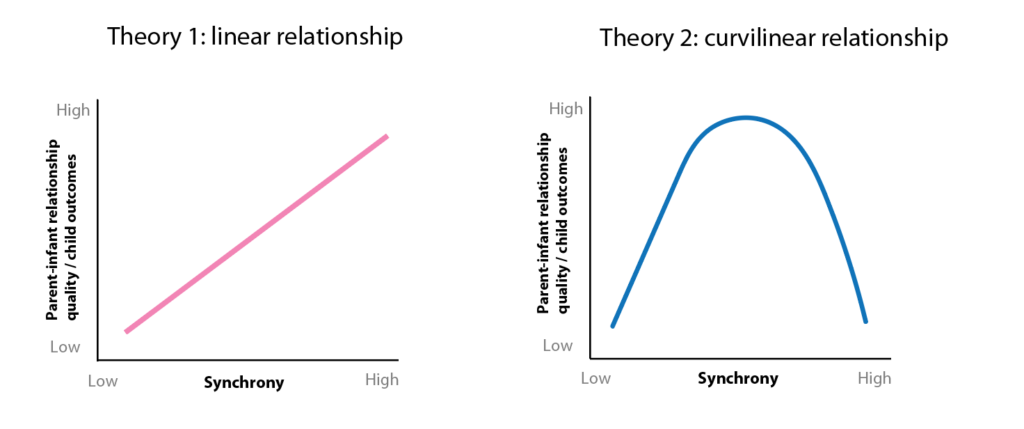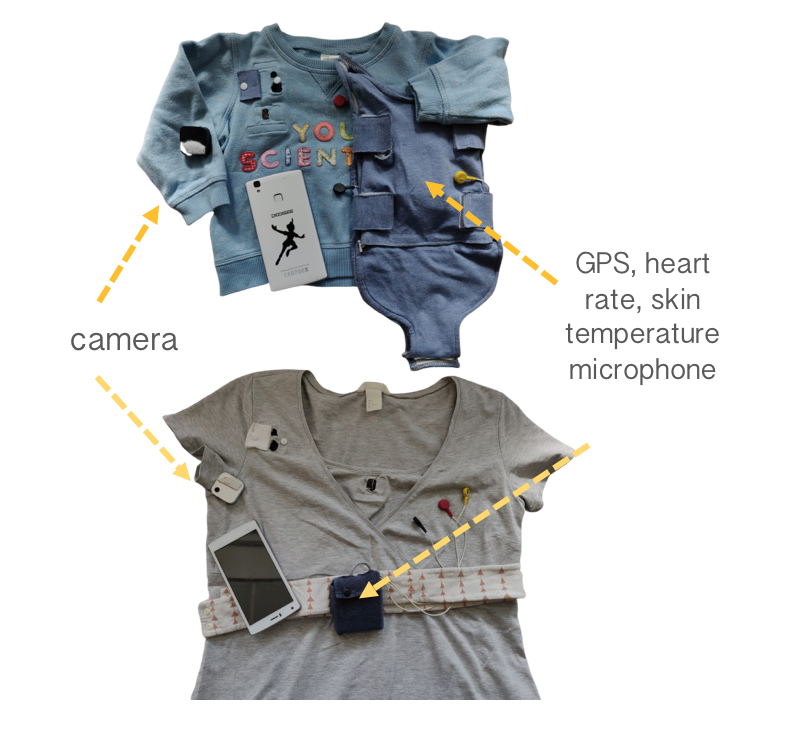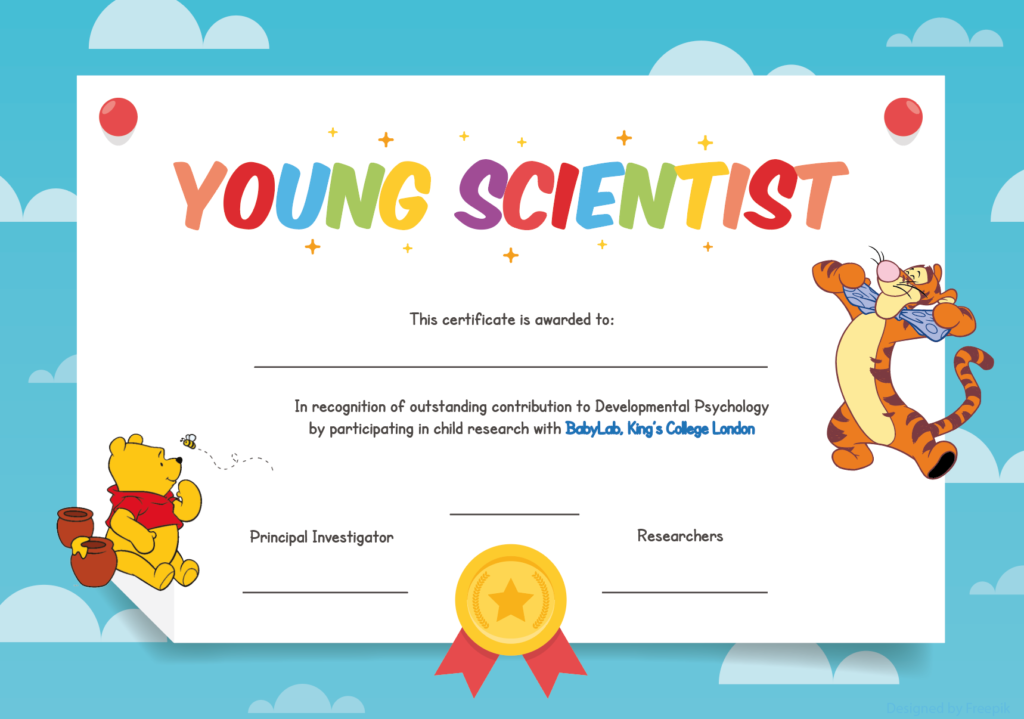Celia Smith Posts
In September 2021, I spoke about my PhD research on the intergenerational transmission of stress and anxiety states between parents and infants with Eric W. Dolan, in an interview published for PsyPost. Read the full article here – excerpt below:
***
Mothers with elevated levels of anxiety tend to be more physiologically “in sync” with their infant children, according to new research published in the journal Psychological Medicine. The stress response of less anxious mothers, on the other hand, is less tightly coupled to their infants.
The findings suggest that anxiety symptoms influence how parents and their infants regulate stress, which could have important implications for children’s psychological development.
“I have long been interested in the intergenerational transmission of stress and anxiety states from parent to infant, as well as how emotion dysregulation develops early in life,” said study author Celia Smith, a PhD student at King’s College London. “I’m also incredibly curious about how our experiences of stress seem personally situated and internally regulated – but, in practice, originate from the emotional states of people around us; from our relationships.”
In the study, 68 mothers and their 12-month-old child wore miniature microphones, video cameras, electrocardiograms, and actigraphs at home, which allowed the researchers to measure moment-to-moment fluctuations in arousal in a natural setting. The wearable devices recorded the participants’ heart rate, heart rate variability, physical activity level, and vocalizations. The mothers also completed an assessment of current anxiety symptoms.
“We worked with families from a big range of socio-economic and ethnic backgrounds, which means our research has broad relevance for the general public,” explained Smith. “And we used some innovative research methods in this study that allowed us to work with families in their own homes, without researchers present. This meant we were not restricted to laboratory settings — which are not the best place for measuring authentic stress states — and could make our research more representative of the real world.”
The researchers found that higher levels of maternal anxiety were associated with higher physiological synchrony. In other words, the arousal level of anxious mothers tended to correspond to the arousal level of their infants. Both anxious and non-anxious mothers exhibited physiological reactivity in response to large-scale changes in infant arousal, but anxious mothers also exhibited reactivity to small-scale fluctuations in their infant.
The findings indicate “that stress and anxiety are emotional states that come to be shared and transmitted between individuals, particularly in the context of close parent-infant relationships found in early development. In our study, we show this at the biological level, with anxious parents and infants tending to have very closely matched stress states throughout the day,” Smith told PsyPost.
“We also suggest that parental anxiety plays a role in infant self-regulation. Our study showed that anxious parents are ‘always on’; they tend to physiologically over-respond to minor stress in their infant. This is compared to non-anxious parents, who are ‘there when you need me’; they are only reactive to more extreme infant stress.”
“The parenting style of being ‘always on’ is associated with slower infant recovery from upsetting moments. As anxious parents, we might therefore want to develop greater bodily awareness of our response to infant distress, particularly in relation to how it affects child emotional development,” Smith explained.
The new findings provide insight into the relationship between parental anxiety and parent-infant stress regulation, and provide a basis for future investigations into how parents can best manage anxiety symptoms. But Smith noted that the “findings of this study are only preliminary” at this point.
“We would need to carry out this study with many more families before making any certain claims or recommendations,” she explained. “We also didn’t include parents with severe mental illness in our study, or parents of more diverse genders, and this is something we would want to do in the future to ensure we can generalize to these groups.
“A big question for us, and for future research, is working out how to best support parents with anxiety during the perinatal period, in such a way that we can support both the parent and the infant to thrive,” Smith added.
The study, “Anxious parents show higher physiological synchrony with their infants“, was authored by C. G. Smith, E. J. H. Jones, T. Charman, K. Clackson, F. U. Mirza, and S. V. Wass.
The below interview was conducted for Project Alpha by Professor Tsachi Ein-Dor (Baruch Ivcher School of Psychology) with answers from me, Celia Smith (Institute of Psychiatry, Psychology and Neuroscience). The interview relates to the recently published paper available [here]. The transcript of this interview has been translated into Hebrew by the Project Alpha team, and is available to read [here].
- Could you define what parent-child synchrony is and the positive aspects that previous research has found for it?
Parent-child synchrony is a huge topic in developmental research. Professor Ruth Feldman is the scientist I look to for my definition of synchrony. She talks about synchrony as being a timed, coordinated relationship between partners. Synchrony can be concurrent (‘when A is high, B is high’) or sequential (‘changes in A forward-predict changes in B’). I often think about this in terms of biology. So, when my heart rate is high, is my baby’s heart rate high too? Or do changes in my heart rate predict changes in my baby’s heart rate later on? You could also think about how aspects of your behaviour predict changes in your child’s behaviour.
Greater parent-child synchrony is thought to relate to more adaptive cognitive development, school adjustment, and empathy in children. One of the reasons I’m interested in parent-infant synchrony is because it may help us understand how children learn to regulate their own stresses and emotions in their early years.
- In your research, you explored parent-child synchrony throughout the day in an innovative way. Could you explain what you did?
Yes! We were really excited about this methodology, which we developed in contrast to existing methods. Traditionally, research that examines the parent-infant relationship is conducted in a laboratory setting, with a short period of interaction filmed by researchers and then analysed afterwards. Interactions are often given an overall ‘score’ for their synchrony level, and then this is compared with other characteristics of the parent or child. However, this approach doesn’t represent the real world very well.
In the real world, we aren’t watched by scientists while we interact with our infants, and we might behave more naturally as a result. To explore parent-child synchrony in our project, we developed wearable miniaturised monitors that were embedded within clothing so they weren’t obtrusive. These miniature monitors included an ECG machine, a microphone, a GPS tracker, a camera, a movement monitor and a skin temperature detector: all in one. Parents and infants wore these clothes for the day in their homes without the researcher present. We did make sure a privacy function was included in the technology too.
- You have found that anxious parents had were more in sync with their babies, which seems positive. You have found that being “always on” is not entirely positive. Could you explain your finding?
Some developmental researchers believe that the more synchrony between you and your child, the greater the quality of the parent-infant relationship, and the better the child outcomes (let’s call it a ‘linear’ theory). However, others believe that extremes of synchrony (whether too low or too high) indicate a negative context, and that a moderate amount of synchrony is ideal (‘curvilinear’ theory).

My research could be seen to support the second theory. This is because I found that (1) more anxious parents had higher synchrony with their infants compared to less anxious parents and (2) more anxious parents were very reactive to their infants’ distress, even when that level of distress was not particularly high. These findings could be used to support the notion of a hypervigilant parenting style that is sometimes noticed in anxious parents, which can be over-stimulating and over-loading for the child.
I would note, though, that I try to be careful about judging levels of synchrony between parents and children, particularly in contexts where the parent has a mental health condition. We are still learning how levels of synchrony relate to later child development, particularly in the area of emotion regulation.
- What is your take-home message for to-be parents given your findings, and given parents’ wish to be the “best” parents that can possibly be?
My research is still in a very early stage so I would begin by saying that the below information needs to be considered alongside other regulated sources of child development and parenting advice, rather than in isolation.
My take-home message for to-be parents would be: make sure that you are supported to manage your own anxieties, and to maintain an awareness of the ways your anxiety can affect how you behave when you are with others. Notice if you have a tendency to be over-controlling or hypervigilant in your interactions with young children, as this can be a sign of anxiety. If you have a heart rate monitor that you can wear at home, this may help give you feedback on when your stress levels are very high – and you could practice managing these using stress reduction techniques such as paced breathing.
I’m currently working on some research that also looks at how our speech patterns can provoke stress in the parent-child relationship. So, watch this space for more information on how we can use our voice to manage our own and our children’s stress in the future.
Stress and anxiety
Let’s talk about stress. When I talk about stress, I mostly mean physiological stress, and when I talk about anxiety, I mostly mean the mental health condition. For now.
You would recognise physiological stress by the way your heart rate quickens when you’re under pressure or you need to be alert – it’s a kind of nervous system response. You might also notice anxiety in someone who (among other things) finds it hard to control their worries and fears, particularly about the future.
Learning how to regulate stress
In developmental research, a key question is how we learn to regulate our own stress and emerging emotions. Psychologists think that, in the earlier years, parents help their babies regulate their stress as a team. As the baby gets older and grows towards independence, the child learns gradually to regulate their stress on their own. This makes intuitive sense, but people who work in mental health are often curious about how this works if the parent has a mental health condition – like anxiety.
We did some research looking at this. We wanted to know: do babies match their own stress levels to their anxious parents? Do anxious parents notice, or ‘clock’, when they and their baby are over-stressed, and calm things down? And finally, how do anxious parents respond to moments of stress in their baby – and how does this help the baby recover from stress? We were interested in these questions from a developmental perspective, but you could apply the same sorts of questions to any relationship – like a teacher-pupil dynamic, or a romantic partnership.
Research at home
To find out the answers to our question, we ran a study with parents and babies from London, Essex, Hertfordshire and Cambridge. Developmental researchers usually do experiments in the lab, because it can be tightly controlled and we can be confident we are being accurate in our investigations. But we also try, wherever possible, to do research in real world settings. For us to do this, we used miniaturised microphones and heart-rate monitors, which could be worn by parents and babies all day without interruption to their activities. This was so we could continually record stress and speech in families in their homes across the day.

As researchers we try to make sure the people who we work with represent the wider population, if we can. This is why we involved 91 pairs of parents and babies from a big range of social and economic backgrounds. On the other hand, we try to make sure all the babies who are involved are roughly the same age. This is because development can change so much over the first year of life. It would be like comparing apples with oranges, if we were comparing three month old babies with twelve month old ones. In our project, the babies were all about eleven months old. Among the parents, we had a group who had higher levels of anxiety, and a group who didn’t.
Stress mirroring
Our study gave us some interesting information on how parents and babies regulate their stress as a team, when the parent has anxiety. Firstly, we found out that anxious parents and their babies mirrored each other’s stress levels throughout the day, whereas the non-anxious parents and their babies did not. This reflects some other research that has found that:
- anxious parents tend to also have very high coordination of behaviour with their babies
- depressed parents and their babies tend not to be coordinated in behaviour at all, and;
- parents who are neither depressed nor anxious tend to coordinate behaviour with their babies some of, but not all, the time.
We suspect there may be a ‘sweet spot’ of stress mirroring that occurs between parents and babies, but that those of us who are more anxious might overshoot a bit. We don’t quite yet know what this means for the development of child stress regulation – but this is an area a number of researchers are looking into.
Stress clocking
Our project also taught us a little bit about what the parent does when both parent and baby get stressed. We found that, at times like these, non-anxious parents tend to bring down their personal stress levels – as if they have clocked that the stress levels in the relationship are a bit too high, and they are trying to calm everything down. However, we didn’t see this happen in the group of anxious parents and their babies.
It’s important to note here that we do not know if these processes are conscious or voluntary – it’s just the way the parents’ bodies are working. It is interesting though, as perhaps a voluntary ability to clock the collective stress levels in the relationship and actively decrease one’s own stress levels could be a good way of regulating stress. Again, this is something we need to look at more closely.
‘Always on’ versus ‘there when you need me’
The final thing our project told us was about how reactive parents were to their babies when the baby was super stressed out. For this, imagine that you have a scale of 1 to 10, with 10 representing the most stressed you could possibly be, and 1 representing no stress. We found that non-anxious parents would have strong physiological reactions if their babies were super stressed out, at level 10. But if their babies were more moderately stressed – for example, say level 7 or 8, then the parent wouldn’t show a big reaction. The parents were, we might say, ‘there when you need me’.
On the other hand, we found that anxious parents would show a strong reaction if their baby was super stressed out – but they would also show the same reaction whether their baby was only moderately stressed (including levels 9, 8, 7 and so on). So the more anxious parents were sort of on high-alert a lot of the time; they were ‘always on’.
We found this difference interesting as it resembled other research that suggests that anxious parents tend to be more stimulating, vigilant and ‘on’ than non-anxious parents. We also noticed that if parents reacted more selectively to their baby’s stress, then it was more likely that their babies would be quicker at recovering from bad moods in the day.
Final thoughts
We think these findings on stress mirroring, stress clocking, and stress reactivity in anxious parents and their babies are all important for helping us understand more about child development. We especially think they will help us understand more about the development of stress and emotion regulation, and we hope that we can use our findings to help inform support for parents and children who maybe find this harder than others.
If you’re wondering why we didn’t do our study with even more people, that’s a good question. We didn’t have all the resources you need to run a study with thousands of families, but we did make sure we had enough people that we could conduct some meaningful statistical analyses. We would always want to run these projects with bigger groups of people, though, to make sure we can really be confident generalising the findings to the broader population.
It’s also worth noting that our project did not address severe anxiety. We did not work with people with a formal clinical diagnosis of anxiety disorder. Instead, the parents reported their anxiety on a questionnaire. At the moment I am running a study with parents with clinical diagnoses, so hopefully I’ll be able to share more findings from that study in due course.
Children who take part in research are the most remarkable young scientists, and we awarded the babies who helped us with our research a university certificate in gratitude for their hard work. We are deeply grateful to their parents who took part, and who helped us to understand more about stress in children.

This post is adapted for a public audience from the academic paper ‘Anxious parents show higher physiological synchrony with their infants’ (Smith et al., 2021). You can learn more about how to read an academic paper by visiting this blog.